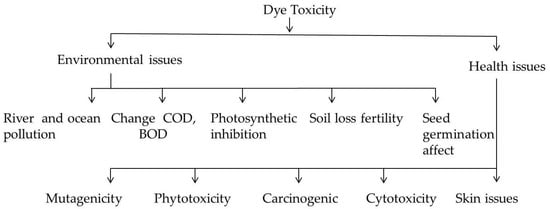Journal Description
Limnological Review
Limnological Review
is an international, peer-reviewed, open access journal that covers all different subdisciplines of aquatic science, published quarterly online by MDPI (from Volume 22, Issue 1-2022). The Polish Limnological Society is affiliated with Limnological Review and its members receive a discount on article processing charges.
- Open Access— free for readers, with article processing charges (APC) paid by authors or their institutions.
- High Visibility: indexed within Scopus, GeoRef, Inspec, CAPlus / SciFinder, and other databases.
- Rapid Publication: manuscripts are peer-reviewed and a first decision is provided to authors approximately 20 days after submission; acceptance to publication is undertaken in 2.6 days (median values for papers published in this journal in the second half of 2023).
- Recognition of Reviewers: APC discount vouchers, optional signed peer review, and reviewer names published annually in the journal.
subject
Imprint Information
Open Access
ISSN: 2300-7575
Latest Articles
Sustainable Solutions: Reviewing the Future of Textile Dye Contaminant Removal with Emerging Biological Treatments
Limnol. Rev. 2024, 24(2), 126-149; https://doi.org/10.3390/limnolrev24020007 - 03 Apr 2024
Abstract
►
Show Figures
Synthetic dyes, exceeding 100,000 types on the market and produced at a global scale of over 700,000 tons annually, are extensively used in the textile industry. This industry, a leading contributor to water contamination, relies on dyes like reactive, azo, anthraquinone, and triphenylmethane,
[...] Read more.
Synthetic dyes, exceeding 100,000 types on the market and produced at a global scale of over 700,000 tons annually, are extensively used in the textile industry. This industry, a leading contributor to water contamination, relies on dyes like reactive, azo, anthraquinone, and triphenylmethane, resulting in substantial water usage and significant effluent generation. A significant modern challenge is the pollution caused by dye-mixed wastewater, releasing hazardous chemicals into water bodies and posing threats to ecosystems, plants, and human health. Traditionally, physicochemical techniques have addressed textile dye-containing wastewater, but their drawbacks, including cost, inefficiency, and potential secondary pollution, have steered attention towards biological alternatives. Utilizing microorganisms and enzymes, these biological methods, such as microbial cell enzyme immobilization, the biofilm technique, bioreactors, biofuel/bioelectricity production, and genetic engineering, have emerged as promising, cost-effective, and environmentally friendly solutions for efficient dye removal from wastewater. This review paper specifically highlights advanced biological techniques and emphasizes their efficacy in addressing the challenges posed by synthetic textile dyes. Through a systematic review of recent research papers, published results, and observations, this review paper provides insights into emerging biological treatment strategies for effectively removing synthetic textile dyes and contaminants from wastewater.
Full article
Open AccessArticle
Diagnosis of the Condition of Aquatic Ecosystems Using a Partial Assessment of Ecological and Trophic States: An Example of Small Lakes in Northern Poland
by
Maciej Markowski and Barbara Wojtasik
Limnol. Rev. 2024, 24(1), 105-125; https://doi.org/10.3390/limnolrev24010006 - 01 Mar 2024
Abstract
►▼
Show Figures
The current state of aquatic ecosystems was assessed for lakes in two river–lake systems: Święta Struga (Święte and Ocypelek) and Kałębnica (Czarne Południowe and Kałębie). Trophic states were determined using the Vollenweider, Nürnberg, and Carlson methods. Additionally, shoreline changes were analyzed for all
[...] Read more.
The current state of aquatic ecosystems was assessed for lakes in two river–lake systems: Święta Struga (Święte and Ocypelek) and Kałębnica (Czarne Południowe and Kałębie). Trophic states were determined using the Vollenweider, Nürnberg, and Carlson methods. Additionally, shoreline changes were analyzed for all lakes concerning their natural character, and physicochemical parameters were utilized as auxiliary elements in the assessment of the ecological state following the guidelines of Directive 2000/60/EC. Supplementary to these methods, the ecological evaluation of the littoral zone utilized meiobenthic organism grouping as an indicator. The results indicate significant differences among the studied reservoirs. Lake Święte is a reservoir bordering mesotrophy and eutrophy, with the ecological state of the littoral zone showing ongoing trophic development. Lake Ocypelek exemplifies a eutrophic reservoir undergoing progressive degradation. The lakes in the Kałębnica system also exhibit advanced trophic conditions, with Lake Kałębie being a eutrophic reservoir. Its shoreline has been significantly altered due to the development of the direct catchment area. In contrast, Lake Czarne Południowe serves as an example of a mesotrophic reservoir, with a substantially changed shoreline. Considering physicochemical elements and chlorophyll a concentration, the water quality for all examined lakes was found to be below the good category. The diagnosis of the condition of lake aquatic ecosystems requires an individualized approach to each of them. Therefore, employing various methods for their assessment, encompassing physico-chemical, biological, and morphological parameters, provides the opportunity to initiate potential remedial actions that will effectively contribute to their improvement. Conducting low-cost research involving a multidisciplinary approach to diagnose the state of aquatic ecosystems is becoming a crucial element in lake monitoring.
Full article
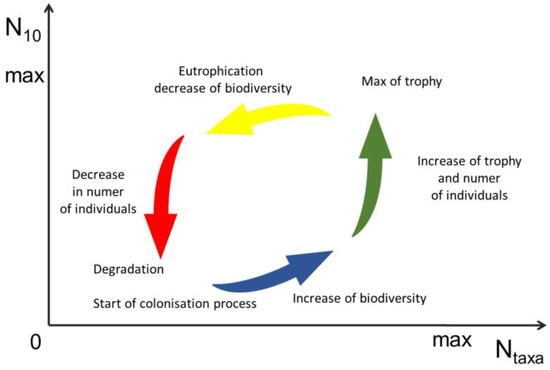
Figure 1
Open AccessReview
Overview of the Eutrophication in Romanian Lakes and Reservoirs
by
Gabriela Elena Dumitran, Liana Ioana Vuta and Bogdan Popa
Limnol. Rev. 2024, 24(1), 76-104; https://doi.org/10.3390/limnolrev24010005 - 01 Feb 2024
Abstract
►▼
Show Figures
In this paper, attention is drawn to the deterioration of Romanian surface water ecosystems due to eutrophication, an important environmental issue both at national and international levels. An inventory of existing studies dealing with the issue of the eutrophication of lakes and reservoirs
[...] Read more.
In this paper, attention is drawn to the deterioration of Romanian surface water ecosystems due to eutrophication, an important environmental issue both at national and international levels. An inventory of existing studies dealing with the issue of the eutrophication of lakes and reservoirs in Romania is made, aiming to identify the main problems Romania is facing in monitoring, classifying, and managing eutrophic ecosystems. On Web of Science, the keyword “Eutrophication”, with “Romania” as country/region, leads to 50 publications, which are analyzed in this review. The number of articles found does not reflect the real environmental issue represented by eutrophic lakes and reservoirs in Romania. At a national level, only 126 lakes and reservoirs have been monitored and assessed between 2018 and 2020, in terms of ecological status/ecological potential. Thus, at a global evaluation, 77% of natural lakes and 33% of artificial ones do not reach the quality objectives. The results of this study showed that the frequency of measurements taken by water quality indicators is not the strongest point of measurement campaigns, as it is not sufficient for the diagnosis of eutrophic lakes, and supplementary measures must be undertaken to better understand and mitigate this phenomenon.
Full article
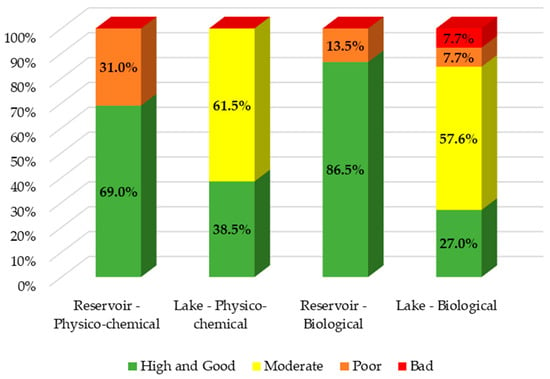
Figure 1
Open AccessArticle
Characteristics of Two Lagoons in the Coastal Area of the Baltic Sea
by
Oskars Purmalis, Laura Grinberga, Linda Dobkevica, Agnija Skuja, Davis Ozolins, Ivars Druvietis, Viesturs Ozols and Jana Paidere
Limnol. Rev. 2024, 24(1), 53-75; https://doi.org/10.3390/limnolrev24010004 - 24 Jan 2024
Abstract
►▼
Show Figures
The proposed study is focused on an ecological analysis of Latvian coastal lagoons, emphasizing their unique but vulnerable nature. Coastal lagoons are recognized as fragile ecosystems of significant ecological, social, and economic value, as recognized by the European Directive 92/43/EEC (Habitats Directive). Despite
[...] Read more.
The proposed study is focused on an ecological analysis of Latvian coastal lagoons, emphasizing their unique but vulnerable nature. Coastal lagoons are recognized as fragile ecosystems of significant ecological, social, and economic value, as recognized by the European Directive 92/43/EEC (Habitats Directive). Despite their protected status, the existence of these ecosystems can be threatened by morphological, hydrological, and anthropogenic changes. The uniqueness of these ecosystems can be determined by the large number of influencing factors and their dynamics. They are affected by seawater, their level of fluctuation, wind exposure, overgrowing with macrophytes, freshwater sources, and water flow generated streams affecting sediment transport and accumulation. All the influencing factors determine a highly trophic ecosystem, which in the studied lagoons is rated as medium to poor ecological status, which confirms the above-mentioned vulnerability and fragility. The aim of this study was to analyze two lagoons in the coastal area of the Baltic Sea in the Riga Gulf, by characterizing, for the first time, their current conditions and ecological parameters because understanding such ecosystems is only partial. The physicochemical composition of lagoon sediments and water shows the impact of seawater by increased electrical conductivity and the concentration of SO42− and Cl− in water, while the presence of detritus in sediments is almost non-existent; thus, the content of organic matter is low with relatively variable pH. The results show that the diversity of studied benthic macroinvertebrates, macrophytes, zooplankton, and even phytoplankton species is low, but there is higher diversity in lagoons and their parts with regular water exchange with the sea. The study provides valuable insight into the ecological dynamics of coastal lagoons in Latvia, shedding light on their current conditions, anthropogenic impact, and the need for sustainable management measures.
Full article

Figure 1
Open AccessArticle
Hydrochemistry and Irrigation Quality of High-Altitude Lakes: A Case Study of the Ramaroshan Lake Complex, Nepal Himalayas
by
Bina Thapa, Laxman Khanal, Ramesh Raj Pant, Chet Raj Bhatta, Prekshya Subedi, Laxmi Prasad Upadhyaya, Chandra Bahadur Sunar, Janaki Poudel, Naresh Pandey, Pensri Kyes, Ankit Kumar Singh, Kiran Bishwakarma and Randall C. Kyes
Limnol. Rev. 2024, 24(1), 30-52; https://doi.org/10.3390/limnolrev24010003 - 08 Jan 2024
Abstract
►▼
Show Figures
The Ramaroshan Lake Complex (RLC) in Sudurpaschim Province, Nepal, is a Himalayan lake cluster that holds significant ecological, economic, religious, and esthetic importance. This study aimed to provide a comprehensive characterization of the hydrochemical properties of water within the RLC and assess its
[...] Read more.
The Ramaroshan Lake Complex (RLC) in Sudurpaschim Province, Nepal, is a Himalayan lake cluster that holds significant ecological, economic, religious, and esthetic importance. This study aimed to provide a comprehensive characterization of the hydrochemical properties of water within the RLC and assess its suitability for irrigation purposes. A total of 38 water samples were collected from seven different lakes of the complex. The physicochemical parameters and major ions were then analyzed. The water samples from the RLC were alkaline, and based on total hardness, they ranged from soft to moderately hard categories. The presence of major ions included the following: Ca2+ > Na+ > Mg2+ > K+ > Fe3+ > NH4+ and HCO3− > Cl− > SO42− > NO3− > PO43−. The alkaline earth metals (Ca2+ and Mg2+) dominated the alkali metals (Na+ and K+) and weak acids (HCO3−) dominated the strong acids (Cl− and SO42−). The dominant hydrochemical facies of the lake water was a Ca-HCO3 type indicating a calcium carbonate type of lithology. Carbonate rock weathering was the most dominant process in influencing the hydrochemistry of the water. A high ratio of (Ca2++ Mg2+)/Tz+ and a lower ratio of (Na+ + K+)/Tz+ revealed the dominance of Ca2+ and Mg2+ resulting from carbonate weathering, with little contribution from silicate weathering. Different irrigation indices revealed the suitability of the RLC water for irrigation. The insights derived from this study are pivotal in safeguarding water quality and bolstering sustainability efforts. The study also furnishes foundational data crucial to an array of stakeholders including researchers and policymakers and significantly contributes to advancing water management strategies and fostering ecosystem conservation in the Himalayan freshwater lakes, particularly in the face of the overarching challenge posed by global climate change.
Full article
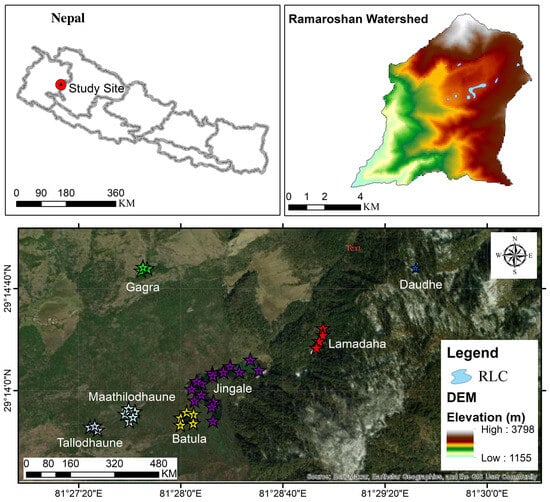
Figure 1
Open AccessArticle
The Possible Use of Stable Carbon and Nitrogen Isotope Signal and Spectral Analysis to Identify Habitat Condition of Aquatic Plants
by
Eugeniusz Pronin
Limnol. Rev. 2024, 24(1), 17-29; https://doi.org/10.3390/limnolrev24010002 - 31 Dec 2023
Abstract
►▼
Show Figures
Many macrophyte species exhibit a high degree of plasticity, enabling them to thrive in various aquatic ecosystems. Identifying the growth conditions of individual aquatic plant species during research or specimen collection is not always possible. In many cases, the nature of the planned
[...] Read more.
Many macrophyte species exhibit a high degree of plasticity, enabling them to thrive in various aquatic ecosystems. Identifying the growth conditions of individual aquatic plant species during research or specimen collection is not always possible. In many cases, the nature of the planned research does not necessitate recognizing environmental conditions. However, the scope of identifying the habitat parameters of the collections of submerged aquatic plant herbariums provides an opportunity for further research. This paper explores the possibilities of using isotopic signals of plants, supported by spectral analyses of powdered plant materials, to ascertain the environmental conditions from which the samples were collected. The results obtained from the stable carbon and nitrogen isotope compositions (δ13CORG and δ15NORG) and the analysis of spectral spectra via FTIR-ART (Fourier Transform Infrared Spectroscopy with Attenuated Total Reflectance) of plant material (Elodea canadensis Michx. species) collected from various habitat ecosystems, including rivers and both hard- and softwater lakes, exhibited significant distinctions between these habitats. Particularly high values of δ15NORG were recorded in the material from rivers. The stable carbon and nitrogen isotope compositions did not differentiate between the material collected from softwater and hardwater lakes. Nevertheless, when comparing the isotopic findings with the FTIR-ATR spectral analysis focused on identifying characteristic peaks associated with the presence of calcium carbonate, noticeable differences were observed in the presence and intensity of calcium carbonate peaks in the material. These differences were only evident when nondecarbonated plant material from hardwater lakes was used for the FTIR-ATR analysis. To the best of the author’s knowledge, the combination of methods applied in this study to identify the origin of E. canadensis from various freshwater environments is the first application of its kind that could enable the rapid identification of plant material origin. Such identification could prove useful in environmental, ecological, and paleoenvironmental research. The increased knowledge of macrophytes’ δ13CORG and δ15NORG values might also be essential in further tracking accelerated eutrophication based on aquatic vegetation’s isotopic signals. This might be important due to the assumption that the increased rate of eutrophication influences organic matter sedimentation in aquatic ecosystems, especially lakes.
Full article
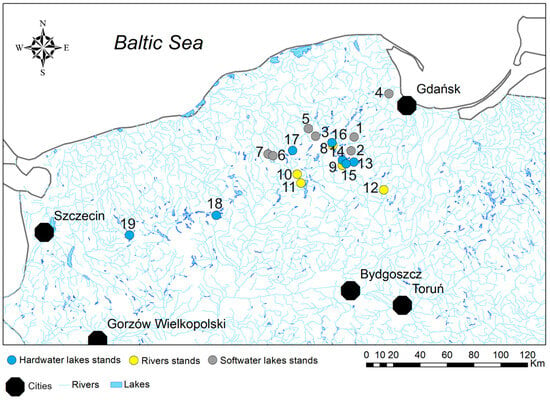
Figure 1
Open AccessArticle
A Modelling Approach for the Management of Invasive Species at a High-Altitude Artificial Lake
by
Dimitrios K. Moutopoulos, Alexandra S. Douligeri, Athina Ziou, Nikolaos Kiriazis, Athanasios Korakis, Nikolaos Petsis and George N. Katselis
Limnol. Rev. 2024, 24(1), 1-16; https://doi.org/10.3390/limnolrev24010001 - 30 Dec 2023
Abstract
►▼
Show Figures
The ecosystem structure of a Mediterranean high-altitude artificial lake (Aoos Springs, Northwest Greece) was assessed and quantified using the Ecopath with Ecosim model. The artificial lake was created in 1990 for hydroelectric production and the fish fauna has been enriched across years due
[...] Read more.
The ecosystem structure of a Mediterranean high-altitude artificial lake (Aoos Springs, Northwest Greece) was assessed and quantified using the Ecopath with Ecosim model. The artificial lake was created in 1990 for hydroelectric production and the fish fauna has been enriched across years due to deliberate or accidental fish stockings, as well as the introduction of the invasive pumpkinseed (Lepomis gibbosus), which may cause adverse effects on aquatic ecosystems and their biota. The model considered 20 species/taxa groups with biological data gathered during 2021–2022 from field surveys, interviews with recreational anglers and literature. The results revealed that the artificial lake of Aoos is a resilient ecosystem to unexpected events with low intensity of fisheries exploitation. The biomass of the introduced invasive species Lepomis gibbosus is low, due to the low biomass level of its diet, Chironomidae and zoobenthic organisms as well as other fish species.
Full article
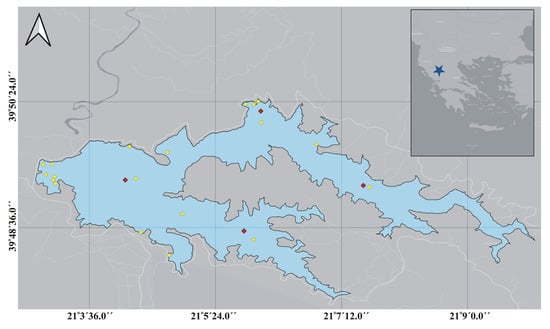
Figure 1
Open AccessArticle
Prediction of Erosive Processes in the Río Piedras and Flecha de El Rompido Salt Marsh (Huelva, Spain) Using Iterative Models and GIS
by
Emilio Ramírez-Juidias and José-Lázaro Amaro-Mellado
Limnol. Rev. 2023, 23(3), 190-202; https://doi.org/10.3390/limnolrev23030012 - 03 Dec 2023
Abstract
►▼
Show Figures
Global warming is an essential factor to consider when studying tidal wetlands. The Río Piedras and Flecha de El Rompido salt marsh is one of the main wetlands in Andalusia, Spain. From the mid-1950s to the present day, Land Use Changes (LUCs) have
[...] Read more.
Global warming is an essential factor to consider when studying tidal wetlands. The Río Piedras and Flecha de El Rompido salt marsh is one of the main wetlands in Andalusia, Spain. From the mid-1950s to the present day, Land Use Changes (LUCs) have caused significant alterations to the landscape. These changes, along with the effects of climatic variables and human activity, have led to an unprecedented impact on the environment. In this study, a patented method is used to obtain the total cubic meters of eroded soil and the average erosion prediction between 2015 and 2021 in the marshland area. Additionally, the various factors contributing to this phenomenon and the influence of intertidal processes are discussed. The results demonstrate how the enhanced integration of LIDAR technologies, digital elevation models, and Geographic Information Systems (GIS), in conjunction with regression models, has proven highly useful in describing, analyzing, and predicting the volumetric change process in the study area. In conclusion, the methodology used is helpful for any type of coastal marshes influenced by tidal processes and climate change.
Full article
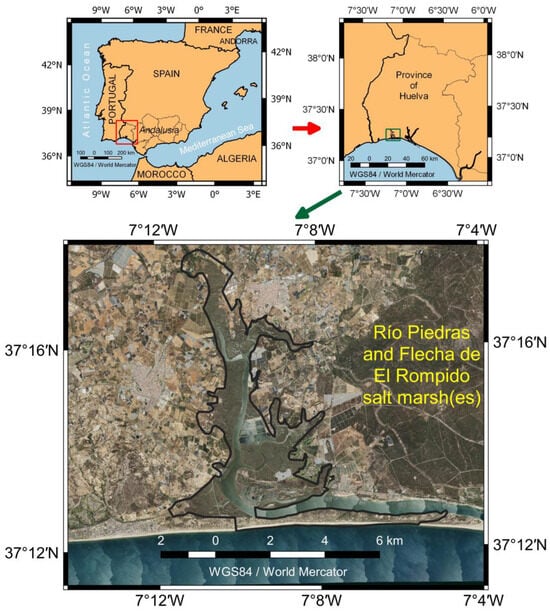
Figure 1
Open AccessArticle
Seasonal Evolution of Stable Thermal Stratification in Central Area of Lake Ladoga
by
Mikhail Naumenko and Vadim Guzivaty
Limnol. Rev. 2023, 23(3), 177-189; https://doi.org/10.3390/limnolrev23030011 - 07 Nov 2023
Abstract
►▼
Show Figures
The complete climatic courses of the parameters of stable thermal stratification for the central part of Lake Ladoga, the largest European lake, are presented on the basis of empirical relationships, taking into account the physical processes governing water temperature variations. For the first
[...] Read more.
The complete climatic courses of the parameters of stable thermal stratification for the central part of Lake Ladoga, the largest European lake, are presented on the basis of empirical relationships, taking into account the physical processes governing water temperature variations. For the first time, the seasonal cycle of the surface water temperature, the temperature and the depth of the thermocline, and the hypolimnion temperature are calculated using the vertical profiles of the temperature obtained from the central area of Lake Ladoga. Temperature data are used for the period of in situ observations from 1897 to the present. The proposed functional forms of the temporal temperature cycle and the course of thermocline’s boundaries deepening are useful for examination and simulation of the heat vertical transport from air to water. Approximation curves for the parameters of heating and cooling periods were developed with high significant determination coefficients. Time dependencies of the climatic rates of change in water temperature and the depth of the thermocline boundaries were determined from the onset of stable stratification to its dissipation. The highest rate of water temperature change in the heating stage takes place in late June–early July, which at the water surface, is 0.32 °C/day, while in the thermocline layer, it is 0.18 °C/day. The peak velocity during the cooling stage at the surface occurs in late August–early September and is 0.14 °C/day, whereas in the thermocline, it is 0.08 °C/day and takes place between September and early October. During the period of heating, the deepening parameters of the thermocline layer do not fluctuate very much, only within the range of 0.1–0.3 m/day. During the cooling period, under the influence of free convection, rates increase drastically. The maximum rates of deepening during the period of full autumn mixing reach 1.8 m/day. When the autumn overturn occurs, the epilimnion thickness equals the bottom depth, and the bottom temperature reaches its maximum during the annual cycle. Climatic norms of the stratification parameters against which it is necessary to assess climate change are calculated.
Full article
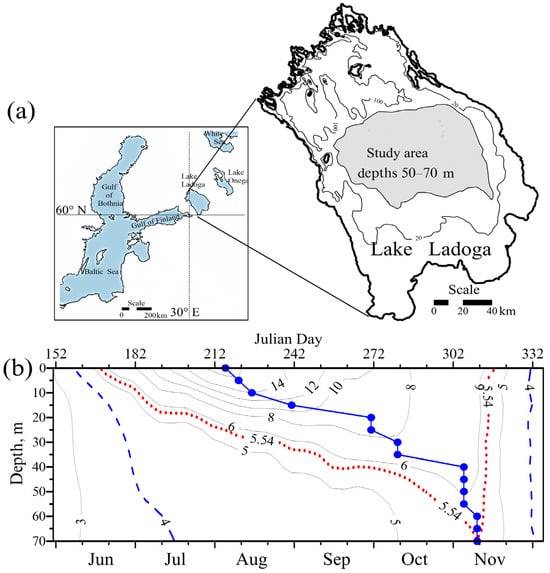
Figure 1
Open AccessArticle
Physicochemical and Microbial Quality of Water from the Ugandan Stretch of the Kagera Transboundary River
by
Daniel Nimusiima, Denis Byamugisha, Timothy Omara and Emmanuel Ntambi
Limnol. Rev. 2023, 23(3), 157-176; https://doi.org/10.3390/limnolrev23030010 - 03 Nov 2023
Cited by 3
Abstract
►▼
Show Figures
Increasing global pollution of water resources undermines the efforts invested in the realisation of Sustainable Development Goals. In developing countries, for example, water pollution is exacerbated by poor regulatory structures and improper waste disposal. This study, for the first time, investigated the physicochemical
[...] Read more.
Increasing global pollution of water resources undermines the efforts invested in the realisation of Sustainable Development Goals. In developing countries, for example, water pollution is exacerbated by poor regulatory structures and improper waste disposal. This study, for the first time, investigated the physicochemical and microbial parameters of surface water from the Ugandan stretch of the Kagera transboundary river. Surface water (n = 135) from downstream, midstream and upstream of the river was sampled between February 2021 and June 2021, and analysed following standard methods for the examination of water and wastewater. Further, the samples were analysed using flame atomic absorption spectroscopy for the presence of heavy metals: nickel, lead, chromium, cadmium and copper. The obtained results showed that turbidity (24.77 ± 5.5–43.99 ± 6.87 mg/L), colour (118 ± 8.90–145.2 ± 30.58 Pt-co units), Escherichia coli (4.96 ± 7.01 CFU/100 mL), lead (23.0 ± 11.0–43.0 ± 12.0 µg/L) and cadmium (3.3 ± 1.0–10.1 ± 10.0 µg/L) were at levels that surpassed their permissible limits as per World Health Organization guidelines for potable water. These results are lower than previously reported for the Rwandese stretch of this river, but still present potential health risks to the population whose livelihoods depend on the river. Measures should therefore be instituted by the East African Community member states to mitigate riverine pollution and ensure sustainable use of the Kagera transboundary river.
Full article

Figure 1
Open AccessArticle
Calculation of Black Ice Thickness and Heat Fluxes inside the Ice and at the Water–Ice Boundary in a Boreal Lake
by
Sergey Bogdanov, Nikolay Palshin, Roman Zdorovennov, Tatiana Efremova, Sergei Smirnov and Galina Zdorovennova
Limnol. Rev. 2023, 23(3), 138-156; https://doi.org/10.3390/limnolrev23030009 - 16 Oct 2023
Abstract
►▼
Show Figures
This paper presents the results of the calculation of black ice thickness, as well as conductive heat fluxes inside the ice and at the water–ice boundary during the winter in the shallow boreal Lake Vendyurskoe (Russia). The calculation was carried out on the
[...] Read more.
This paper presents the results of the calculation of black ice thickness, as well as conductive heat fluxes inside the ice and at the water–ice boundary during the winter in the shallow boreal Lake Vendyurskoe (Russia). The calculation was carried out on the basis of experimental data obtained from a thermistor chain with nine sensors, five of which were successively frozen into the black ice during the winter of 1995–1996. Data processing was carried out by two methods, whose novelty lay in the simultaneous use of the temperature series of two sensors frozen into the ice and those that were in the water column directly under the lower ice boundary. The resulting estimates of black ice growth rates varied widely: maximum values (up to 8.5 mm/day) were observed in December during first month of ice period, with an average growth rate of 3.4 mm/day from December to the end of February. The heat flux in the black ice sheet varied significantly over synoptic time intervals; the highest values (up to 40 W/m2) were observed during the first two weeks of measurements, then a downward trend was noted, to values of ~10 W/m2. Black ice was isothermal from the end of February to the end of April due to the release of water on the ice surface after heavy snowfall. During this period the heat flux inside the black ice was zero, and there was no increase in black ice thickness. The calculation of the water–ice heat flux gives results that are very sensitive to both measurement limitations and the variability of external parameters. However, the estimates of this flux for moments in time when the sensors were frozen in the ice are values 1–2 W/m2, which are quite close to the previous estimates for Lake Vendyurskoe. The limitations of the presented method are related to the thermal inertia of black ice and make it possible to calculate of ice thickness with a time delay of several days. To quantify the effects of thermal inertia of ice, a model problem of heat propagation in the ice sheet is considered for the case of periodic temperature changes at its upper boundary. The attenuation of the amplitude and the delay of a heat wave during its propagation in the ice are estimated, and accordingly, the conditions, under which the temperature profile in the ice sheet is close to linear, are analyzed.
Full article
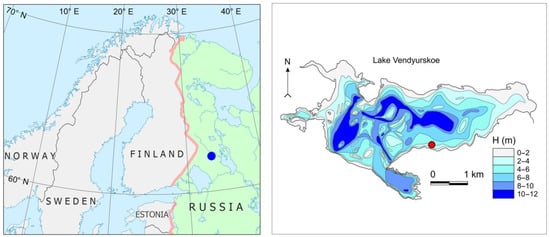
Figure 1
Open AccessArticle
How Did Journals in Water Sciences Survive the COVID-19 Pandemic? A Scientometric Study
by
Piotr Rzymski
Limnol. Rev. 2023, 23(3), 126-137; https://doi.org/10.3390/limnolrev23030008 - 02 Oct 2023
Abstract
►▼
Show Figures
The COVID-19 pandemic affected nearly all strata of life, including scientific activities. Implementation of nationwide lockdowns, closures of universities, and other measures significantly limiting social mobility precluded field and laboratory research from being pursued at a pre-pandemic pace. On the other hand, working
[...] Read more.
The COVID-19 pandemic affected nearly all strata of life, including scientific activities. Implementation of nationwide lockdowns, closures of universities, and other measures significantly limiting social mobility precluded field and laboratory research from being pursued at a pre-pandemic pace. On the other hand, working from home could translate into higher productivity of researchers in terms of publication output, ultimately affecting the journals’ metrics. This effect has been well evidenced in the biomedical field, but whether it also occurred in aquatic sciences has not been explored. Therefore, this study aimed to analyze and compare various metrics of journals classified in the Scopus evaluations in 2019 (encompassing 2016–2019, the pre-pandemic period) and 2022 (covering 2019–2022, the pandemic period) within three subjects: aquatic science, oceanography, and water science and technology. In general, the number of journals classified into the considered categories increased in 2022 by 12%, and the majority (78%) experienced an increase in the CiteScore metric. The total published articles and received citations also significantly increased in 2022 by 17.5% and 63.5%, respectively, and were even higher in the case of open access journals—69% and 145%, respectively. The overall share of cited articles in the considered period was higher by 5% than in the 2019 Scopus evaluation and by 7% in the case of open access periodicals. However, source normalized impact per paper (SNIP) and the SCImago journal rank (SJR) values decreased by 7% and 8%, respectively. The highest share of citations was generated by Water Research, Water, and the Journal of Hydrology, and the highest number of articles was published by Water, Frontiers in Marine Science, and Desalination and Water Treatment. Only five of the COVID-19-related papers published in journals with the highest CiteScore and total number of citations received more than 200 citations, but their contribution to citations received by the journals was not high. In summary, the present study’s findings indicate the high potential of the field dedicated to water sciences to adapt in a period challenged by an infectious disease pandemic. However, they do not exclude the adverse effect that this period could have on the activities of individual scientists and research teams.
Full article

Figure 1
Open AccessArticle
Influence of Anthropogenic Activities on the Water Quality of an Urban River in an Unplanned Zone of the Amazonian Coast
by
Luci Cajueiro Carneiro Pereira, Natália do Socorro da Silva Sousa, Brenda Ribeiro Padilha da Silva, Ana Lucia Biondo da Costa, Francielle Raquel Baltazar Cavalcante, Laiane Maria dos Santos Rodrigues and Rauquírio Marinho da Costa
Limnol. Rev. 2023, 23(2), 108-125; https://doi.org/10.3390/limnolrev23020007 - 06 Sep 2023
Abstract
►▼
Show Figures
The database on water quality in Amazonian rivers located in unplanned urbanized regions along the Brazilian Amazon Coast is still quite limited. This study addresses these concerns, and the tested hypothesis was that the water quality of the Cereja River has deteriorated in
[...] Read more.
The database on water quality in Amazonian rivers located in unplanned urbanized regions along the Brazilian Amazon Coast is still quite limited. This study addresses these concerns, and the tested hypothesis was that the water quality of the Cereja River has deteriorated in recent years, despite the efforts of government authorities to mitigate anthropogenic impacts. To assess changes in water quality, seven campaigns were conducted, collecting data at six fixed points during two different periods. High-resolution satellite images were used to document unplanned occupation. Unfortunately, the number of houses along the Cereja River has increased, in violation of the law. This has contributed to the river’s intense trophic condition, lower dissolved oxygen concentrations, higher concentrations of pathogenic bacteria, and loss of vegetation cover. According to national water quality standards, the Cereja is unsuitable for any human use. This is in stark contrast to the scenario a few decades ago when the river was used for leisure, fishing, and other activities. The results obtained confirm the initial hypothesis and can support potential management strategies and decision-making by authorities. The observed scenario can be extrapolated to other rivers located in urban areas in the Amazon region that have similarly regrettably experienced relatively uncontrolled growth.
Full article
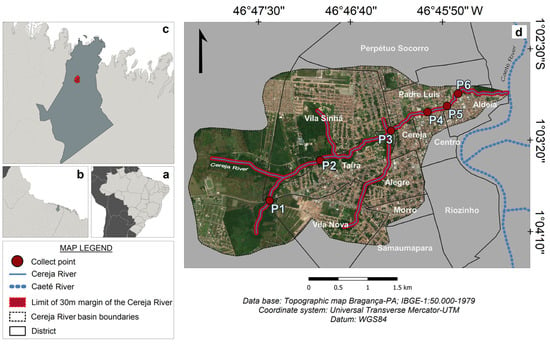
Figure 1
Open AccessArticle
Estimation of Tritium Concentration in the Rain- and Groundwater in the Dry River of Hafr Al Batin, Saudi Arabia
by
Al Mamun
Limnol. Rev. 2023, 23(2), 93-107; https://doi.org/10.3390/limnolrev23020006 - 01 Sep 2023
Abstract
►▼
Show Figures
Natural tritium is widely dispersed in the environment, leading to human exposure to tritium through water ingestion, inhalation of tritium gas, and absorption through the skin. High levels of tritium in the environment can pose significant health risks due to the potential carcinogenic
[...] Read more.
Natural tritium is widely dispersed in the environment, leading to human exposure to tritium through water ingestion, inhalation of tritium gas, and absorption through the skin. High levels of tritium in the environment can pose significant health risks due to the potential carcinogenic effects of tritium. Therefore, this study aims to estimate the tritium concentration in spiked water, rainwater, and groundwater by a liquid scintillation counter (LSC). Due to the lower detection levels of the LSC, an enrichment process of tritium ten- to thirtyfold was carried out using the electrolysis process. The enriched water was then analyzed to estimate the tritium concentration. Five reference samples were prepared by diluting a standard with known concentrations (spiked sample) to verify the precision of the measurement technique. The estimated tritium levels of the rainwater and the groundwater were within the 0.3 to 3.5 tritium units (TU) range. A comparatively higher tritium concentration was estimated for the shallow wells in the lower valley of the monitored areas. However, relatively lower concentrations were detected for wells located in the hillside areas. These findings will assist regulatory authorities in formulating strategies to ensure public safety by mitigating human exposure to tritium.
Full article

Figure 1
Open AccessArticle
Field Study to Evaluate Water Loss in the Irrigation Canals of Middle Egypt: A Case Study of the Al Maanna Canal and Its Branches, Assiut Governorate
by
Mohamed A. Ashour, Mahmoud S. Abdel Nasser and Tarek S. Abu-Zaid
Limnol. Rev. 2023, 23(2), 70-92; https://doi.org/10.3390/limnolrev23020005 - 13 Aug 2023
Cited by 1
Abstract
►▼
Show Figures
Egyptian policymakers and researchers have been working to address the challenge of bridging the gap between limited water resources and the growing population’s needs for agricultural and food production. The National Great Project for Lining and Rehabilitation of All Open Canals of the
[...] Read more.
Egyptian policymakers and researchers have been working to address the challenge of bridging the gap between limited water resources and the growing population’s needs for agricultural and food production. The National Great Project for Lining and Rehabilitation of All Open Canals of the Irrigation Network aims to reduce irrigation water losses through seepage, evaporation, and evapotranspiration. This study evaluated water losses from the Al Maanna canal network in the Assiut governorate, Middle Egypt, using empirical formulas and field ponding methods. The results show the Moleth–Worth formula was more compatible with field measurements, with estimated seepage losses of 2.07 and 2.20 million m3/month, respectively. Moreover, maximum evaporation and evapotranspiration losses were 0.086 and 1.133 million m3/month, respectively. Consequently, total water losses from the Al Maanna canal are estimated to be 3.42 million m3/month, accounting for 13.63% of the total discharge. After canal rehabilitation, evaporation and evapotranspiration losses significantly decreased, while seepage losses were lowered to 0.472 million m3/month, as estimated using the field ponding method. Hence, lining the Al Maanna canal network could reduce water losses by 84%, promoting lining processes that yield significant benefits such as moral, cultural, and environmental benefits. This approach outweighs implementation expenses and ensures a sustainable water supply.
Full article
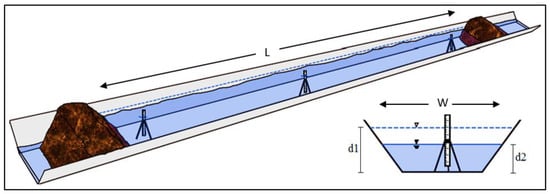
Figure 1
Open AccessArticle
Release of Selected Metals (Al, Cd, Cu, Mn, Ni, Fe, Zn) from River Bottom Sediments: An Experimental Study
by
Magdalena Senze, Monika Kowalska-Góralska, Katarzyna Czyż and Anna Wondołowska-Grabowska
Limnol. Rev. 2023, 23(2), 50-69; https://doi.org/10.3390/limnolrev23020004 - 20 Jul 2023
Abstract
►▼
Show Figures
Sediments from three rivers in south-western Poland and their tributaries were used in a laboratory experiment on metal (Al, Cu, Ni, Cd, Zn, Fe, Mn) release. Metal migration was studied under different pH (pH 3.93, pH 7.29, pH 9.59) during 96 h. Al
[...] Read more.
Sediments from three rivers in south-western Poland and their tributaries were used in a laboratory experiment on metal (Al, Cu, Ni, Cd, Zn, Fe, Mn) release. Metal migration was studied under different pH (pH 3.93, pH 7.29, pH 9.59) during 96 h. Al concentration was the highest in Bystrzyca and lowest in Strzegomka; other metal concentrations were highest in Nysa Szalona and lowest in Strzegomka. The values of pH and electrolytic conductivity increase throughout the experiment in acidic and neutral environments. Water pH decrease was observed under alkaline conditions, but conductivity reached higher values with time. The aluminum release showed an increase in values followed by a decrease. The highest aluminum amounts were released from the sediment from Nysa Szalona and the lowest from Strzegomka. The greatest aluminum migration was observed in the acidic medium. Similar observations were made for Mn and Zn: Strzegomka < Nysa Szalona < Bystrzyca. For Cu, Cd, Fe and Ni, the highest values were recorded in sediments in alkaline conditions. The amount of metals migrating from sediments to water remains at a similar level as presented by other researchers. More metals are released under acidic conditions. The most intensive migration of metals is noted at the beginning of the experiment. This experiment shows the existing trend of metals migration from the sediments to the over-bottom water, which is important from the point of view of the use of water for drinking purposes. Satisfactorily, the sediments in varied environments behave predictably enough that the quality of raw water under these conditions is not compromised, which is confirmed by environmental and health standards. The research performed concerns a specific area of southwestern Poland, for which this type of research has not been conducted.
Full article
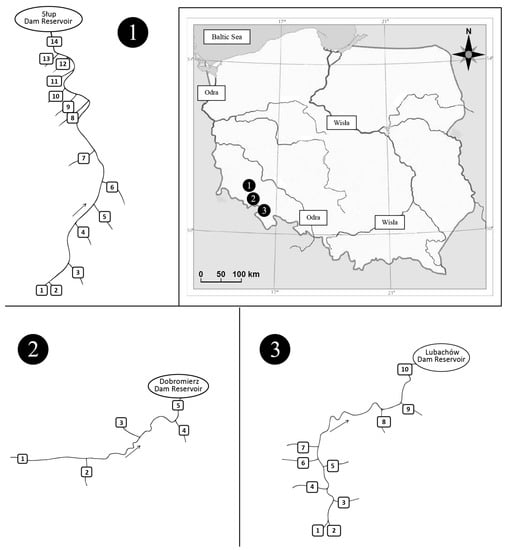
Figure 1
Open AccessArticle
Diversity and Variability of the Course of Ice Phenomena on the Lakes Located in the Southern and Eastern Part of the Baltic Sea Catchment Area
by
Rajmund Skowron, Pavel Kirvel, Adam Choiński and Ivan Kirvel
Limnol. Rev. 2023, 23(1), 33-49; https://doi.org/10.3390/limnolrev23010003 - 01 Jun 2023
Cited by 1
Abstract
►▼
Show Figures
The aim of the study is to determine the scale of differentiation and variability of ice phenomena on the lakes in the south-eastern part of the Baltic Sea catchment area. The analysis was performed based on data from the period 1961–2020 from 15
[...] Read more.
The aim of the study is to determine the scale of differentiation and variability of ice phenomena on the lakes in the south-eastern part of the Baltic Sea catchment area. The analysis was performed based on data from the period 1961–2020 from 15 lakes located in Poland (10) and Belarus (5). The characteristics of ice phenomena were characterized, i.e., the length of their occurrence and ice cover, the thickness of ice cover and the number of breaks occurring in the ice cover in the given years were characterized. The analysis of the course of ice phenomena made it possible to distinguish three regions with an increasing length of ice phenomenon occurrence from west to east. The zones were the west of the Vistula, the east of it and the eastern part of the Belarusian Lake District. In the analyzed multi-year period, a shortening of the duration of ice phenomena and ice cover, a decrease in the maximum thickness of the ice and an increasing number of breaks in ice cover were observed. These data correlate with the upward trend in air temperature.
Full article

Figure 1
Open AccessArticle
Environmental Risks of Water Resources in the Belarusian Polesie
by
Ivan Kirvel, Alexander Volchak, Sergey Parfomuk and Pavel Kirvel
Limnol. Rev. 2023, 23(1), 21-32; https://doi.org/10.3390/limnolrev23010002 - 01 May 2023
Abstract
►▼
Show Figures
The article is devoted to the problems of water resources in Belarusian Polesie. Surface water resources analysis was carried out for the different types of runoffs. There was a significant decrease in maximum spring runoff and a decrease in the average annual runoff.
[...] Read more.
The article is devoted to the problems of water resources in Belarusian Polesie. Surface water resources analysis was carried out for the different types of runoffs. There was a significant decrease in maximum spring runoff and a decrease in the average annual runoff. A statistically significant increase in the minimum winter runoff is observed for the rivers of the Pripyat River basin. For the minimum summer–autumn runoff, there was no unambiguous trend in the runoff change. Quality of natural waters analysis included investigation of the annual concentrations of priority substances in the water of some rivers in Polesie for dissolved oxygen, phosphates, nitrogen, petroleum products, copper, zinc, etc. In general, there have been trends toward a pollution decrease in the Polesie Rivers. The possible consequences of changes in river runoff due to climate change are considered. The priority tasks of research on solving the Polesie water problems are outlined.
Full article

Figure 1
Open AccessArticle
Dipteran Prey Vulnerability in Intraguild Predation (IGP) System Involving Heteropteran Predators: Density and Habitat Effects
by
Shreya Brahma, Dipendra Sharma, Goutam K. Saha and Gautam Aditya
Limnol. Rev. 2023, 23(1), 1-20; https://doi.org/10.3390/limnolrev23010001 - 27 Apr 2023
Abstract
►▼
Show Figures
(1) Background: The effects of density and the habitat conditions on the prey vulnerability in the Intraguild Predation (IGP) system were evaluated using the water bug D. rusticus as the top predator. (2) Methods: Using two different density levels (low or high) of
[...] Read more.
(1) Background: The effects of density and the habitat conditions on the prey vulnerability in the Intraguild Predation (IGP) system were evaluated using the water bug D. rusticus as the top predator. (2) Methods: Using two different density levels (low or high) of the dipteran prey (mosquito and chironomid), the IGP system was set with A. bouvieri as the IG prey. (3) Results: The prey vulnerability was reduced in complex habitat conditions, irrespective of the prey and predator density levels and the prey identity. Correspondingly, the IG prey vulnerability was higher in the low shared prey density and complex habitat. The IG prey consumption by the top predator was higher with the mosquito as shared prey than chironomid as shared prey. Observations on the prey consumption indicated that the consumption of both the chironomid and the mosquito prey dwindled with the time for all combinations of the prey density and the habitat conditions. On a comparative scale, the prey clearance rates were higher for mosquitoes in contrast to the chironomid larvae as shared prey. (4) Conclusions: Apparently, a complex set of interactions involving the habitat conditions, top predator and the prey determines mosquito prey vulnerability against the water bug. Such interactions provide evidence for the coexistence of the mosquito larvae along with multiple predators in the wetland ecosystem.
Full article
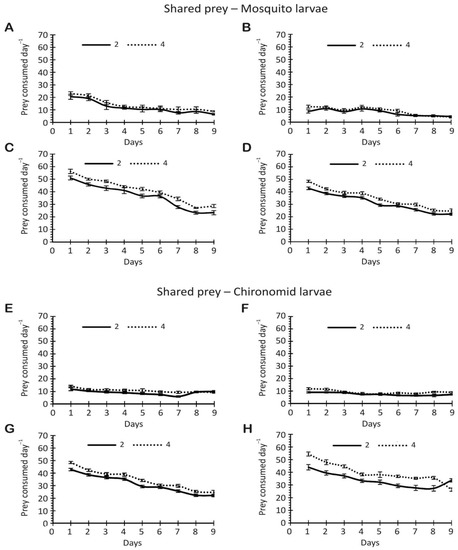
Figure 1
Open AccessArticle
The Surface Temperature of Water in Polish and Belarusian Lakes during the Period of Climate Change
by
Rajmund Skowron and Nina Sukhovilo
Limnol. Rev. 2022, 22(1), 13-22; https://doi.org/10.3390/limnolrev22010005 - 23 Apr 2023
Cited by 1
Abstract
►▼
Show Figures
The paper presented the results of surface water temperature measurements from 17 lakes located in northern Poland and Belarus over the period of 50 years (1971–2020). Using the Excel computer program, Corel Quattro Pro 8, and graphic Draw 9, annual and monthly averages,
[...] Read more.
The paper presented the results of surface water temperature measurements from 17 lakes located in northern Poland and Belarus over the period of 50 years (1971–2020). Using the Excel computer program, Corel Quattro Pro 8, and graphic Draw 9, annual and monthly averages, extreme values, and annual and monthly trends were calculated and presented. These were supplemented by the monthly average air temperatures for 13 weather stations. The research showed that the temperature in all lakes was characterized by a positive trend at the level of 0.044 °C year−1. The largest lake was characteristic for the Chervonoe Lake—0.066 °C year−1—and the smallest 0.029 °C year−1 for the deep Lake Hańcza. In the course of the average monthly surface water temperatures, a positive trend was also observed, ranging from 0.015 °C year−1 in January to 0.069 °C year−1 in May. These values correlated with the average air temperatures in the winter months (December–March) and with the winter NAO index (DJFM).
Full article
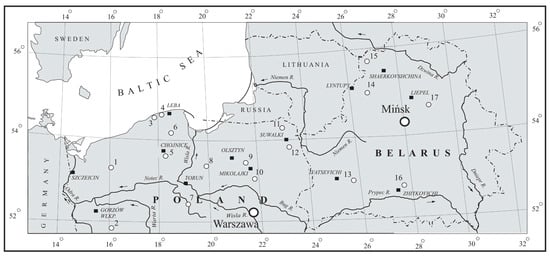
Figure 1
Highly Accessed Articles
Latest Books
E-Mail Alert
News
Topics

Conferences
Special Issues
Special Issue in
Limnological Review
Trends in the Trophic State of Freshwater Ecosystems
Guest Editor: Gabriel-Ionut PlavanDeadline: 31 August 2024
Special Issue in
Limnological Review
Hot Spots and Topics in Limnology
Guest Editors: Piotr Rzymski, Piotr KlimaszykDeadline: 31 March 2025


